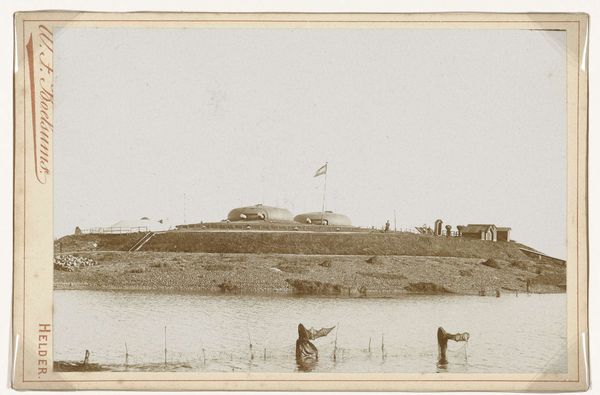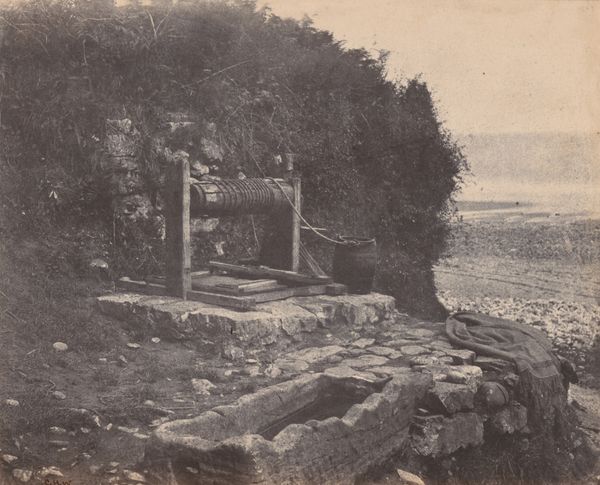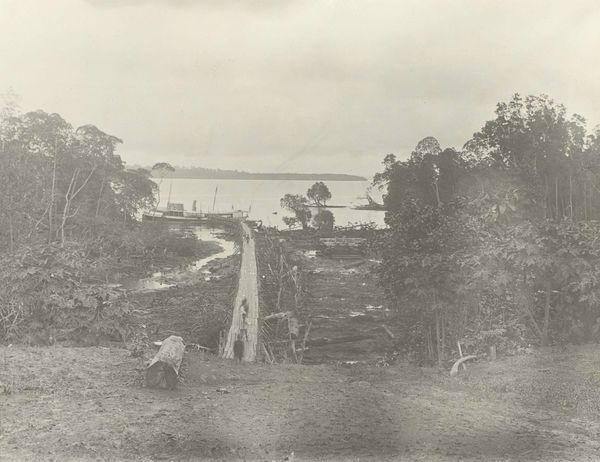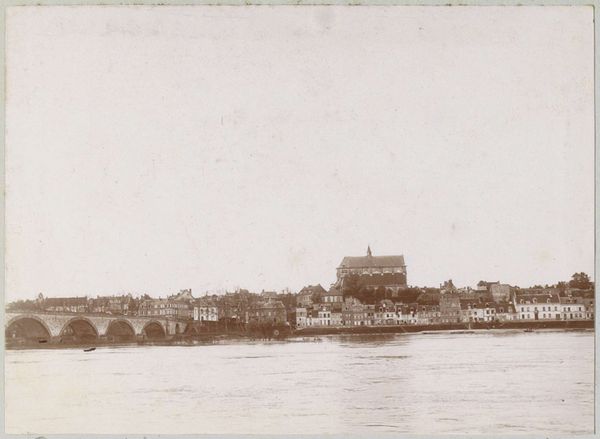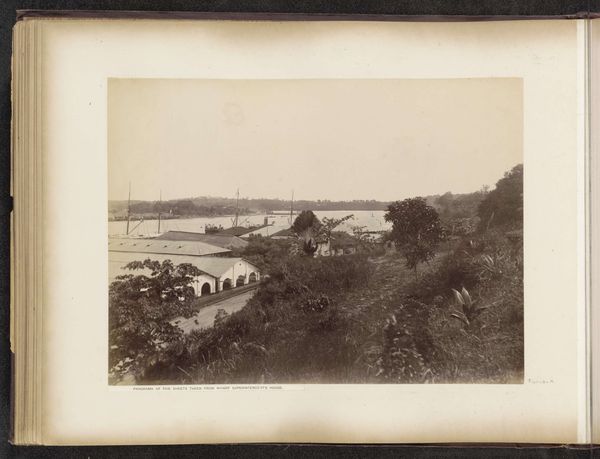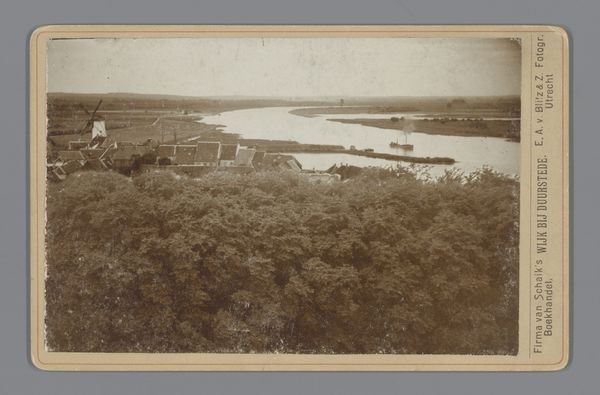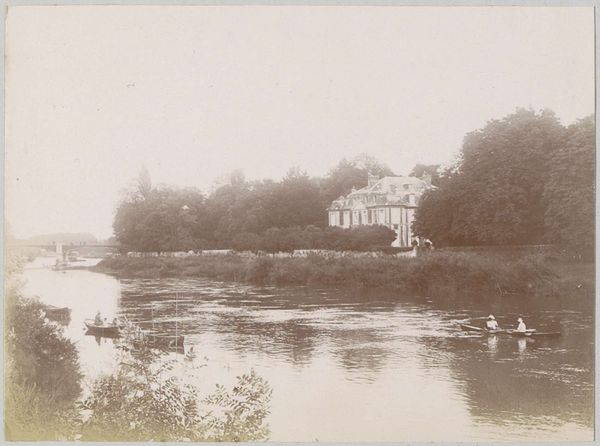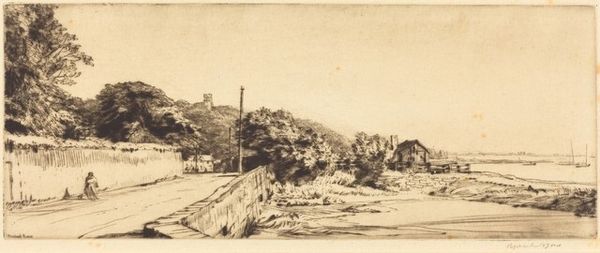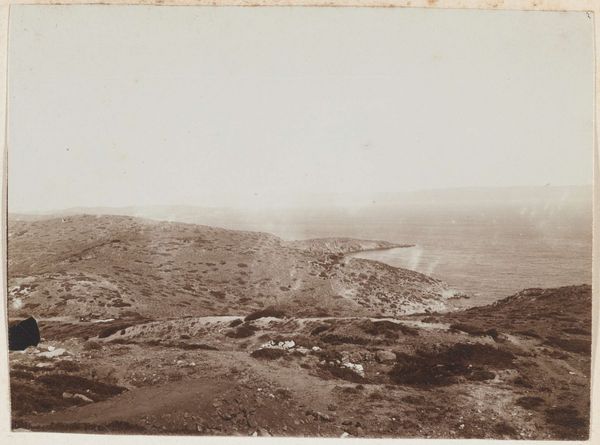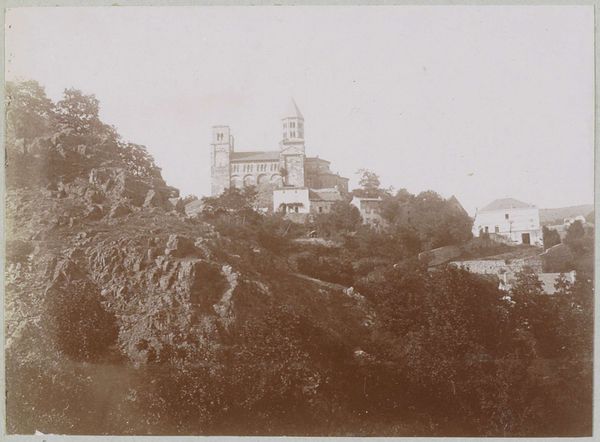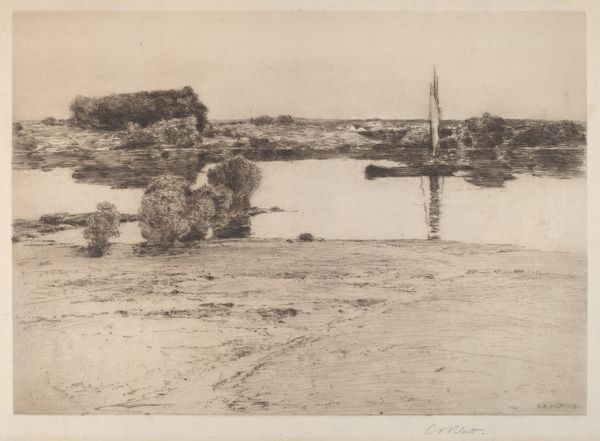
Dimensions: height 64 mm, width 106 mm
Copyright: Rijks Museum: Open Domain
Editor: This is "Gezicht op een villa aan de kust in Carqueiranne," taken in 1903. The Rijksmuseum tells me it’s a photograph, possibly a print as well. Looking at the villa, perched right on the coastline, I immediately think about who occupied such prime real estate in the early 20th century. What strikes you about it? Curator: That's a good question. For me, the photograph reveals much about the burgeoning leisure class at the turn of the century. This image isn’t just about a pretty villa; it’s about access and privilege visualized through architecture and landscape. How does this image play into the visual rhetoric of wealth and leisure? Editor: Visual rhetoric? So you're saying that even back then, images of villas served to showcase a lifestyle? Like an advertisement? Curator: Precisely! Think about it. Photography, still relatively new, captured and circulated these scenes. It reinforced a narrative: idyllic settings, architectural grandeur, all associated with a particular social stratum. It both documented and glorified that world. What impact might such images have on the broader public? Editor: I guess it could create aspirational desires. Make people want to live like that. Or maybe resentment? Depending on their own circumstances, of course. Do you think the photographer was conscious of this power dynamic? Curator: Perhaps. Or they could have been fulfilling a commission or documenting progress in construction. We can analyze this photograph without definitively answering questions about authorial intent, by contextualizing in the social climate. Seeing how images shape perceptions – and often, reinforce inequalities – gives us a sharper understanding of art’s public role. Editor: It's fascinating to consider how something that seems like just a picture of a villa can reveal so much about social power structures. Thanks for opening my eyes to this! Curator: My pleasure. Thinking about art through a historical lens really makes you appreciate its lasting impact on society and our understanding of it.
Comments
No comments
Be the first to comment and join the conversation on the ultimate creative platform.
